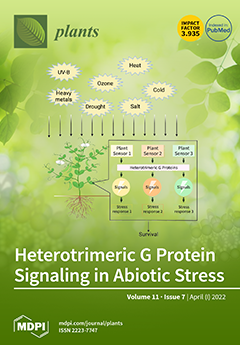The modern pteridophyte genus
Equisetum is the only survivor of Sphenopsida, an ancient clade known from the Devonian. This genus, of nearly worldwide distribution, comprises approximately 15 extant species. However, genomic information is limited. In this study, we assembled the complete chloroplast genome
[...] Read more.
The modern pteridophyte genus
Equisetum is the only survivor of Sphenopsida, an ancient clade known from the Devonian. This genus, of nearly worldwide distribution, comprises approximately 15 extant species. However, genomic information is limited. In this study, we assembled the complete chloroplast genome of the giant species
Equisetum xylochaetum from a metagenomic sequence and compared the plastid genome structure and protein-coding regions with information available for two other
Equisetum species using network analysis.
Equisetum chloroplast genomes showed conserved traits of quadripartite structure, gene content, and gene order. Phylogenetic analysis based on plastome protein-coding regions corroborated previous reports that
Equisetum is monophyletic, and that
E. xylochaetum is more closely related to
E. hyemale than to
E. arvense. Single-gene phylogenetic estimation and haplotype analysis showed that
E. xylochaetum belonged to the subgenus
Hippochaete. Single-gene haplotype analysis revealed that
E. arvense,
E. hyemale,
E. myriochaetum, and
E. variegatum resolved more than one haplotype per species, suggesting the presence of a high diversity or a high mutation rate of the corresponding nucleotide sequence. Sequences from
E. bogotense appeared as a distinct group of haplotypes representing the subgenus
Paramochaete that diverged from
Hippochaete and
Equisetum. In addition, the taxa that were frequently located at the joint region of the map were
E. scirpoides and
E. pratense, suggesting the presence of some plastome characters among the
Equiseum subgenera.
Full article






